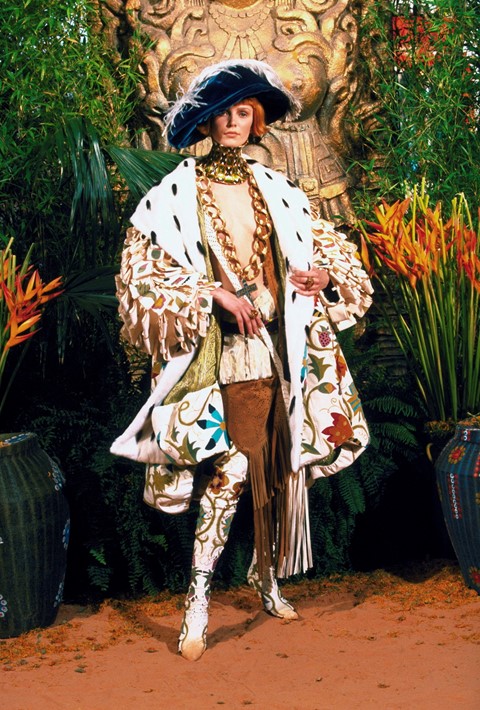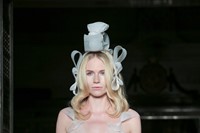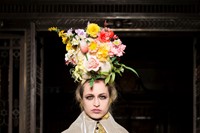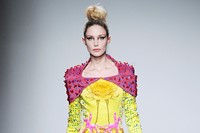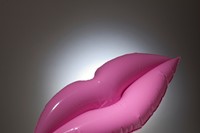Dal Chodha reports on the first exhibition to consider the inherently challenging (yet utterly compelling) territory of sartorial offence
In the trailers for TV’s Project Runway, the model, television personality, businesswoman, fashion designer, television producer and occasional actress Heidi Klum declares fashion’s most brutal philosophy: "In the fashion world one day you’re in... the next day you're out!" There is nothing more shameful than being on the wrong side of a moment.
Glossy magazines are our holy books, their quivering pages full of divine teachings on what we should and shouldn’t wear. Every minute, fresh notes on what to buy are thrown up onto lurid screens for our silent corroboration. Yet, for everything that is in, something must be out. A sort of whimsical reserve bench like that at a football match sits on the periphery of good taste filled with shoes, bags, silhouettes and colours, waiting to be called up in a month or a year or a decade’s time. Today, Alessandro Michele’s kangaroo fur moccasins for Gucci are the dernier cri, but in how many weeks will they be replaced with Christopher Kane’s geological crocs in smart pastel colours? The Vulgar: Fashion Redefined, which is open at Barbican Art Gallery until February 5, 2017, is the first exhibition to consider the inherently challenging yet utterly compelling territory of taste. Vulgarity, the designer Hussein Chalayan says in an interview that features in the show, is about perception: "revealing what is normally hidden. Shamelessly hidden."
Curated by Judith Clark, the exhibition rests on psychoanalyst and writer Adam Phillips’ definitions of "the vulgar". Phillips sets up a series of questions related to notions of vulgarity, whilst Clark delves into its excesses. Their studies play out over two floors, separated into 12 exhibits with historic dress, couture and ready-to-wear fashion, textile ornamentation, manuscripts, photography and film dating back to the Renaissance through to the 21st century. "I’m a great believer in vulgarity – if it’s got vitality. A little bad taste is like a nice splash of paprika. We all need a splash of bad taste – it’s hearty, it’s healthy, it’s physical; I think we could use more of it," Diana Vreeland, the venerated editor of Harper’s Bazaar and Vogue, once wrote. No doubt she would have adored the voluminous, floral embellished 18th-century court mantua, placed opposite Lacroix’s ‘Qui a le droit’ wedding dress from S/S93, with its dramatic high-neck covered in gold leaf and imitation jewels. And to the shared attitude in the pop-culture mania of Lagerfeld’s A/W14 Chanel shopping centre show, read in context to a sketch of Gaston-Louis Vuitton’s personal monogram – arguably the first ever logo.
"We are not identifying anything or anybody as vulgar," Phillips says. "But of course, it is a word that is in lots of people’s minds even if it is not actually being used. One of the things we want people to be curious about is when the word occurs to you, what is occurring to you? If you look at an image of somebody and you think secretly that she or he is really vulgar, then what are you actually thinking?" The show leaves us alone with our own hang-ups about class, money and taste. Vulgarity is taste out of order.
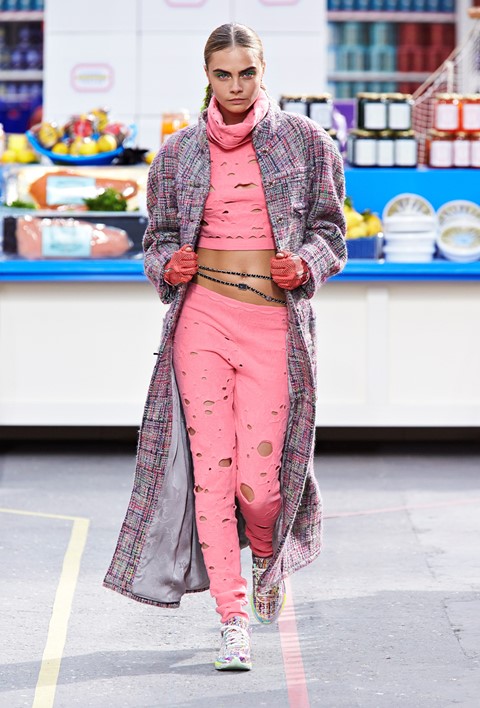
"Why this cruel word?" Clark asks. "It is about division – it is about saying you’re using the rules wrong; you don’t belong here. You’re showing too much or too little… You’re just not getting the rules right and I think that’s very interesting to look at. It applies to us all, all of the time." Today there is much confusion around the value and values of fashion (see now, buy now! Zayn Malik and Versus! Balenciaga or Vetements?) that the show questions the whole lot, looking at the idea of division and assimilation. The word is inexplicably linked to the headlines that have dominated the news for the last sixth months, from the major cultural impact that Brexit will have on the UK to the global influence of Trumpism. Innocent images uploaded to Instagram trick the website’s touchy algorithm all of the time. We’re living in an age that is absolutely obsessed with offence.
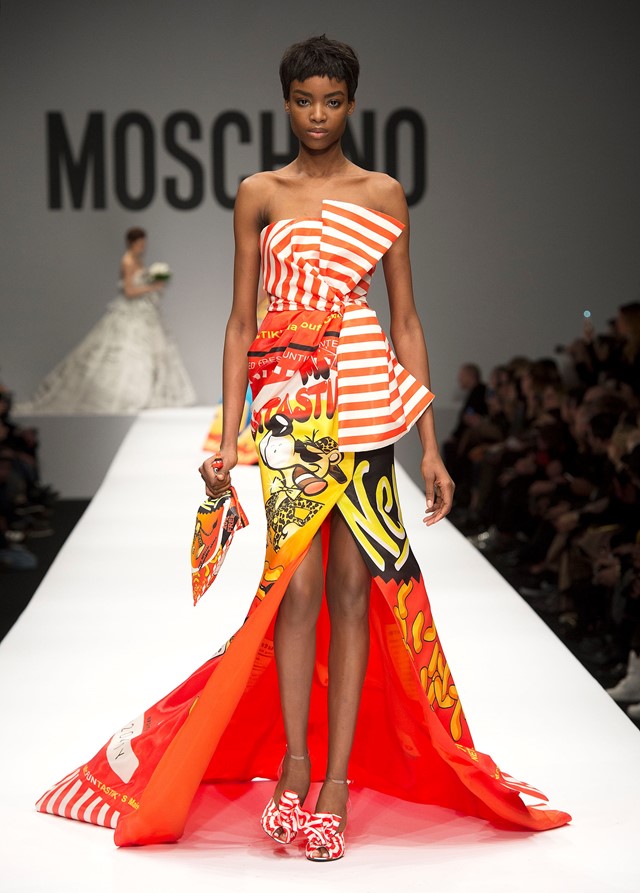
"There’s a whole vocabulary of discrimination that people, quite rightly, have become very wary of," Phillips says. "Nouveau riche, for example, was a very common phrase used in the 1960s and 70s to describe mostly Jews in my experience… But I think the other bit of this that’s topical is actually to do with immigration. Foreigners are 'vulgar'. They are vulgar because they don’t 'get it' – in other words, they haven’t actually tuned in to certain codes of taste, according to the people who think they have got it." As a result, anybody who hasn’t 'got it' is either prone to or fearing being accused of vulgarity. "It’s one of the versions that xenophobia takes and I think that is very interesting. What investment is there in people getting it wrong and people getting it right, and how much is actually staked on those faux pas or not."
Fashion is built on uncertainty. It is shown to be inherently vulgar, especially when it is perceived to be too popular, excessive, sexualised, kitsch or camp. Its lexis is full of definitive terms like right or wrong, ugly or beautiful. We rarely talk of something being ugly despite its beauty. The Vulgar too exposes our own, well-heeled snobbishness. Phillips says: "It is entirely to do with snobbery and superiority! Yes! Why are people more interested in being disdainful than curious? Why do we feel we need this kind of feeling of superiority in order to sustain our own ideas of taste? Why do I need to bother to be contemptuous or mocking of somebody's taste I do not like?"

At one point in the exhibition, Raf Simons’ lean, embroidered tailoring for Dior – inspired by male court attire of the 18th century – is dwarfed by John Galliano’s exaggerated, frothy, draped opera coat from 2003. Both designers are reacting to a certain historicism, straddling the codes of the house of Dior with their own sense of what looks good. The Dior Look is explored in divergent ways; both ensembles a product of their time. The paring is canny. "All of the dress in this exhibition has been celebrated, so it’s not a paranoid exhibition in that sense. It’s not saying this is vulgar, this isn’t. It’s saying we live with these distinctions, languages of division about value, about excess, about limits, all of these things, and that’s why 12 definitions work better than one. It’s not a specific time period or designer, it needed to kind of mash up different moments, but moments that are vivid to people," Clark says.
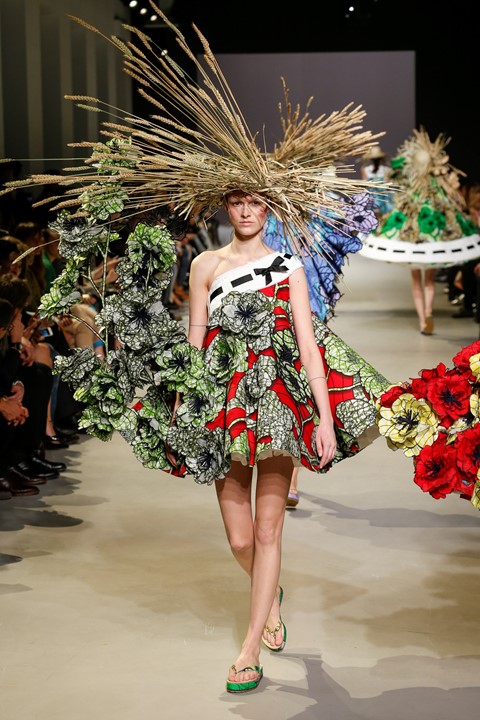
In 1983, Yves Saint Laurent was the first living designer to have a major exhibition dedicated to his work at the Metropolitan Museum of Art in New York, fuelling the debate around fashion’s place within a museum setting. Its most iconic piece was his silk cocktail dress from the Mondrian Collection of 1965. At the Barbican, Clark has installed the very same dress alongside a minidress made from a pattern bought from Simpsons of Piccadilly in 1966, a reissue of the style from 1980 and a shift made in cooperation with Gemeentemuseum in The Hague by the Dutch designer Michael Barnaart van Bergen in 2011. Standing together, they tell a cautionary tale to an industry that is stuck in an echo chamber of its own celebrity. "If you show a Mondrian dress, you know it’s aspiring to be a painting or not. And you have to make up your mind if you are looking at a copy as it’s drawing attention to the unique. Which one are we talking about? If you have Saint Laurent, debatably that would be the original, but it’s not the original because it points to another original." Taste, we learn, is paranoid. Phillips and Clark lay our neuroses beautifully bare.
The Vulgar: Fashion Redefined runs at London's Barbican Art Gallery until February 5, 2017.
